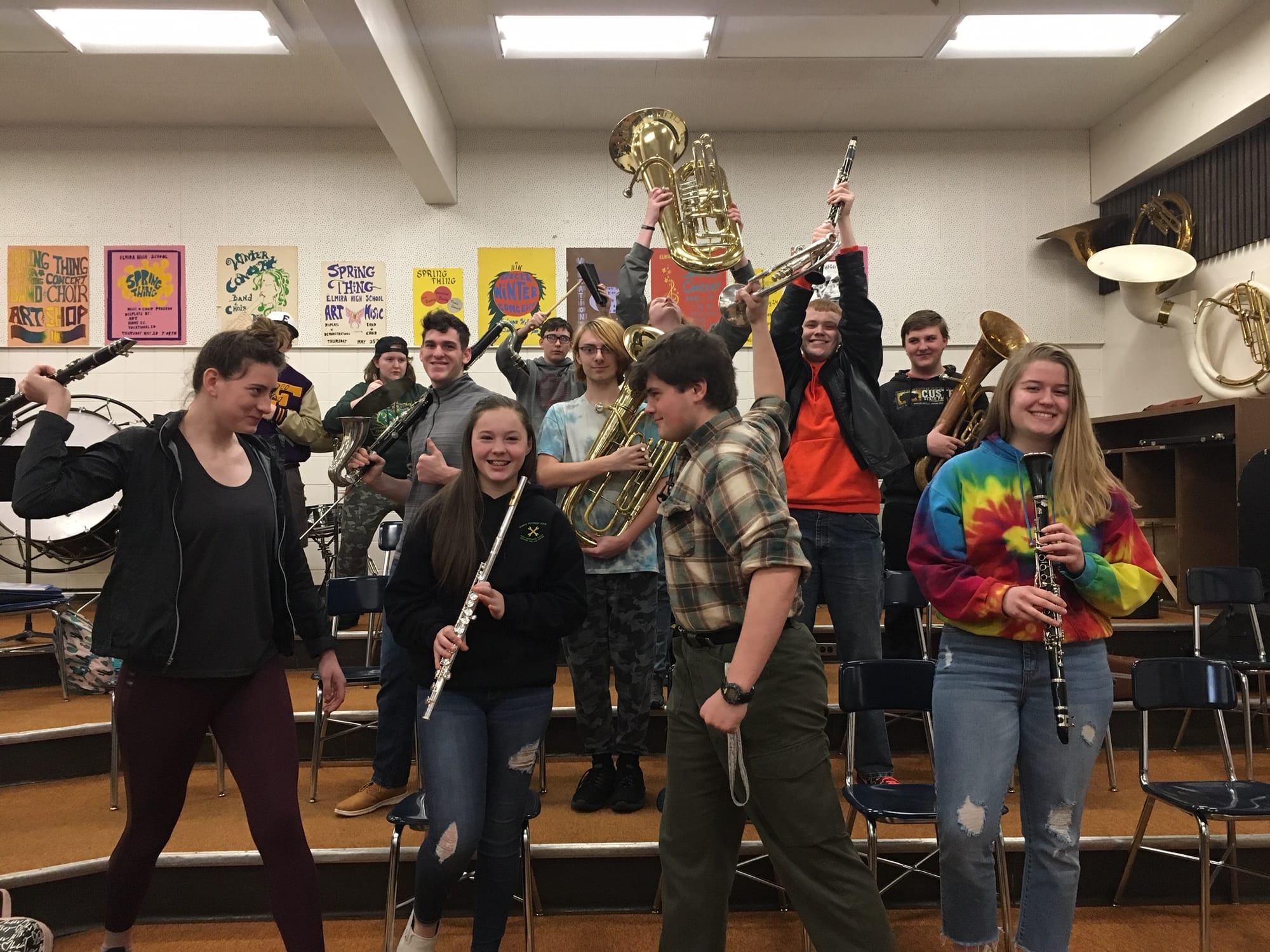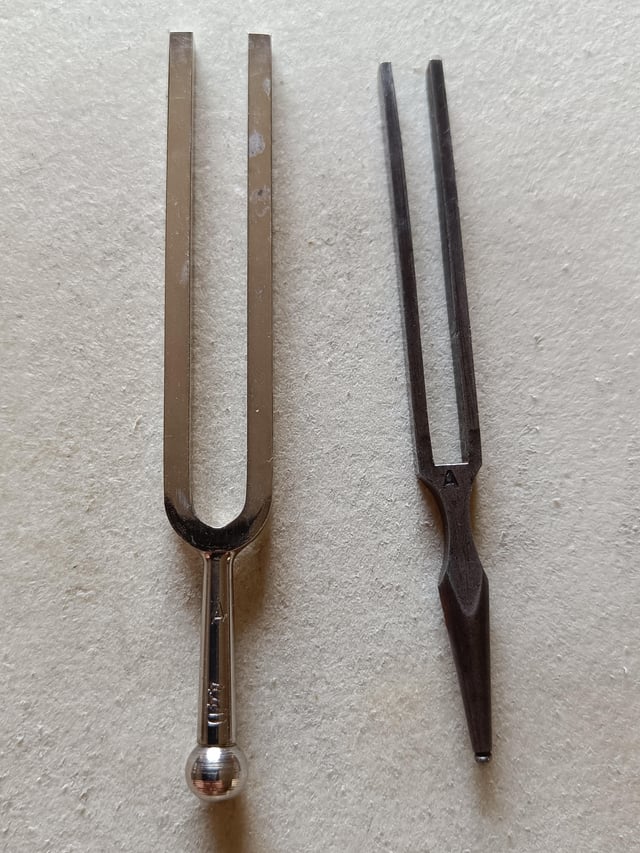How a Concert Band Director Can Tell How Good the Band Is

For a concert band director, gauging the quality of their ensemble is an essential part of their role. It’s not just about the performance itself but about continuous assessment and growth. Directors rely on various indicators to determine how well their band is playing, both as individuals and as a collective unit. In this article, we’ll be looking at some of the essential ways a director can tell how good a choral group is. First, there will be the goal, followed by some constructive steps with which you can achieve those goals, in relative order.

1. GOAL - Intonation and Tuning One of the first things a director will listen for is the band’s overall intonation. The ability of the group to play in tune with each other is crucial for achieving a polished sound. The Director will listen for:
- The instruments to blend well and the sections to align harmoniously. This make for a great beginning for the band.
- How well brass, woodwinds, and percussion come together in tuning during warm-ups and rehearsal exercises.
- If there is any wavering of the instruments’ tone, whether sharp and flat. This could indicate weak embouchures.
- The band to be solid in tuning by listening for how the chords and intervals sound. Is the harmony clean, or are there noticeable dissonances?
STEPS TO TAKE – A well-tuned ensemble conveys a sense of unity and precision, while poor tuning might signal that the group is still struggling with basic technical skills.
- If necessary, begin with simple tuning practices. Use recordings or two experienced players to demonstrate what being in tune and out of tune sound like. Some players may not have had exposure to the concept before. In some instruments, especially those in the lower registers like tubas, trombones, and bassoons, it’s possible to hear the frequency beats when two instruments are out of tune. Frequency beats are very subtle, quick moving beats that occur when two frequencies are close, but not exact.
- Long tones are extremely useful for embouchure building. During warm-ups, have the band play long tones in different registers.
- Describe and demonstrate, or have demonstrated, what it might take to keep an instrument in tune as it is being played. Most often, it involves adjusting the embouchure a bit for certain notes or ranges, depending on the instrument. The tuning of a French horn can be adjusted while playing by cupping one’s hand in the bell to allow for more or less air to pass through.
2. GOAL - Rhythmic Precision A band’s ability to stay in time is a reflection of its discipline and attention to detail. A director will listen for:
- Rhythmic consistency, ensuring that all players are locking in with the conductor’s beat. This includes accurate timing with rests, dynamic changes, and syncopated rhythms.
- The band to maintain a steady tempo throughout a piece, especially during more complex rhythms or tempo changes. This demonstrates strong ensemble cohesion.
- Any negative rhythmic and tempo practices, such as inconsistencies in timing, such as rushing or dragging.
STEPS TO TAKE –
- Depending on the overall skill level of the band, the conductor can write out (using white board or smart board) the most troublesome rhythms and have the whole band, whether they are playing that part or not, either clap out or “say out” the rhythm using any educational aids that might work for that particular band.
- Tempo workouts, such as starting a piece, the having the whole band stop while counting the measure and resuming playing after so many measures. Use of a loud metronome that can be silenced and made to sound again can help not only with this exercise, but also with establishing a good internal clock in the players’ minds.
- The best way to establish proper tempos and to achieve great tempo changes is to practice them. The conductor should be absolutely certain that the initial tempo and any subsequent changed tempos are always the same. If the initial tempo is marked at 90 bpm, it should always be that. This may call for the director to practice establishing the correct tempo privately before rehearsal of the piece begins.

3. GOAL – Balance and Blend For any concert band, achieving a balanced sound across all sections is critical. Directors will listen for:
- How well the brass section, woodwinds, and percussion work together, without one section overpowering the others. Are the melody and accompaniment parts clearly defined?
- How well the band responds to the director’s attempts to adjust the dynamics of different sections to create a more unified sound, helping weaker sections to stand out more or ensuring louder sections don’t dominate, thus ensuring that the sound is unified, with all parts complementing each other rather than competing for attention.
STEPS TO TAKE –
- For the players to hear band as it’s properly balanced is almost impossible. Depending on the seating arrangement, the flutes may be directly in front of the trombones and feel the need to play as loudly as they can all the time in order to be heard. In order to overcome such tendencies, a modified game of “Simon Says” may be used. Pick a piece with which the band is familiar. As they play it, they will ignore any written dynamics and respond only to the dynamic indications made by the conductor. Even better, the conductor may describe what the dynamics might be. The players can then hear what it sounds around them like when certain dynamics are used.
- After a piece has been well-rehearsed, particularly after having used the “Simon Says” game, record the piece as well as is possible so that the band can hear what the whole thing sounds like when the dynamics are well balanced.
- Be on guard for over-blowing by some instruments that may be trying to play their forte too loudly. The tone can get nasty very quickly.
4. GOAL – Articulation and Diction – Another clear sign of a band’s quality lies in their articulation—the way individual notes are attacked and released. A conductor will look for:
- Whether the band is well-trained enough to execute various articulations with clarity, whether it’s a crisp staccato, a smooth legato, or a powerful marcato.
- The precision of these articulations, which reflects the level of technical skill within the group in this area.
- How well the band executes its diction. Diction is a term borrowed from vocal music but is applicable to instrumentalists as well. It refers to the precision and clarity of each note. If articulation is sharp and consistent, it shows a high level of musicality and practice.
STEPS TO TAKE –
- Some players may never have been taught the proper way to articulate their instruments. Part of one rehearsal time could be dedicated to ensuring that all players know what to do to articulate well. Here is where a guest speaker or two might be helpful since they can not only demonstrate the techniques, but also answer any questions. There are also plenty of helpful pictures and short videos on the internet.
- Sometimes a section’s diction has more to do with starting and stopping notes and phrases at the exact same time as well as playing expressive crescendos and decrescendos as a unit. This would take some creative exercises in exaggerated dynamics changes to identify and play those and more subtle changes.

5. GOAL – Expression and Musicality A great band doesn’t just play the notes correctly—they also bring emotion and expression into their performance. When a band performs with musicality, the music feels more alive, not like a mechanical playing of the music. Directors would look for:
- The level of musicality in the band, that is, how well the band conveys the mood and character of a piece.
- How well they execute proper dynamic levels. dynamics ebb and flow appropriately
- How well they convey the music’s phrasing. phrasing becomes more natural
- The proper use of rubato, a very important element in Romantic and other expressive pieces.
STEPS TO TAKE –
- Help the musicians analyze the elements in the music that help to bring it to life. These would include:
* Dynamics levels and changes, including slight, unmarked swells in phrases.
* Articulations of all sorts, including accents, staccato, tenuto, and others.
* Phasing, including short, one or two measure phrases, as well as longer phrases. These are often delineated by breathing spaces or other inferred stops, or an accent of some sort. - If possible, use contrasting recordings of either the piece that the band is endeavoring to play or one very similar. There are plenty of “World’s Worst Band” videos on the internet to contrast with a good performance.
- Following playing contrasting recordings, isolate each element with the musicians’ help and plan where and how each element will be used in the band’s current piece.
6. GOAL – Technical Skill and Individual Performance. These are the mechanics of playing. Evaluating them isn’t as interesting as noticing the more artistic elements of a band’s performance, but they are the building blocks upon which everything else is built. Directors will look for
- Good breathing technique
- Well-developed embouchures
- Good articulation and tonguing
- Proper hand positions
- Precision in intonation
- Wide range and flexibility
STEPS TO TAKE – These are covered among the more artistic components of a band’s performance. However, these are the fundamentals that need to be in place. Some instrumentalists can sound very good, but will use some poor technical practices that can, eventually, result in poor performance or even injury due to things like carpal tunnel syndrome.
- Develop proper breathing techniques. Breathing exercises can be part of the warm-up process.
- Develop strong embouchures. These exercises would be part of the breathing exercises. Have the players play long notes, then long loud notes, then long low notes. When playing scales, they could play loudly at the bottom and get softer as the notes go up. Extend the scales into higher ranges while playing even softer. For a while, the sound will be horrible, but the musicians will be learning about high note breath control.
- Improve articulation and tonguing. After a demonstration of some sort about the proper techniques for tonguing and other articulations, practice scales or other warm-ups with number of different articulations, perhaps even section by section so that you can identify any section that may need extra help.
- Develop proper positions for hands and fingers. Different instruments require that the hands and fingers are in certain locations and formations. Good posture is also essential. A slouching body makes for a slouching sound. Correct posture also reduces fatigue and soreness in the neck and back.
- Increase precision in intonation. This can be done with ear training. Have two instruments of the same type or family play the same note. Ask the rest of the band to determine if they are playing in tune. As the two players if they came to the same conclusion. Hearing one’s tuning while playing is often different from hearing other people play it.
- Building range and flexibility. This could be a part of embouchure-building tactic (see above), using scales, arpeggios, and long tones.

7. GOAL – Sight-Reading and Adaptability A final sign of a band’s proficiency is their ability to sight-read. A director will observe how the band:
- Demonstrates the ability to read through a new piece, maintaining solid intonation, rhythm, and expression despite unfamiliarity with the music.
- In rehearsals, if the band can respond quickly to tempo changes, dynamic adjustments, or other changes in the music, it shows flexibility and a deeper understanding of the music.
STEPS TO TAKE
- Sight reading can be practiced, but never rehearsed. The only way to practice it is to do it. The best way to do this is to have the band sight read at the beginning of the season, whether the school year or community band year. Instruct each member to make a few notes as they play about what went well and what didn’t. Play from start to finish with no stops, unless the whole thing simply falls apart. Then, review their mental notes. What went right? What could be done better next time? A good choice for a piece to sight read first would be something that has a repeat or two in it (even if it’s not necessarily marked as a repeat). That way, they can correct any mistakes they make the first time.
- It’s good to remind the musicians that sight reading never involves getting all of the nuances correct the first time. Here are the things that should be attempted, in a general order, when musicians advance their skills in sight reading:
* Notes – pitch and duration. Includes maintaining correct tempo.
* Dynamics – even if achieved a measure or so after indicated.
* Articulations – slurs, staccato, etc.
* Phrasing and other artistic elements.
Sometimes, despite a director’s best efforts, some players simply cannot achieve certain skills, especially if the band is part of a school curriculum and rehearsal time is limited. In those cases, either tutoring sessions after school or private lessons would need to be used. And, for some students, the cost of those lessons may need to be subsidized. In short, a high quality band takes more than a casual approach. Conclusion A concert band director assesses a wide range of factors to determine the quality of their ensemble, from tuning and rhythm to musicality and technical skill. By carefully listening and observing how the band performs, a director can gauge their strengths and weaknesses and tailor their teaching approach to improve the group. Ultimately, a strong band is one that demonstrates not only excellent technical skills but also a deep connection to the music, and a good director knows how to guide the band towards that goal.
Salt Cellar Creations understands the beauty and power that a Concert Band can convey and the challenge that band directors face in choosing the best music for their ensemble. SCC has a growing library of original works and arrangements to help meet the needs of band teachers and directors Find out more about what Salt Cellar Creations has to offer for Concert Bands HERE. Explore the available music HERE.
SCC can also compose an original piece for you or do a custom arrangement for you to allow you to showcase your group. There are two ways that this can be done; one is much more affordable than the other. CONTACT US for more information. And SCC is always looking for ideas of pieces to arrange or suggestions for original pieces.
We have written and arranged music for groups not only in the US but also in Canada, the United Kingdom, France, Australia, New Zealand, and Austria. Please CONTACT US to let us know what we can do for you!